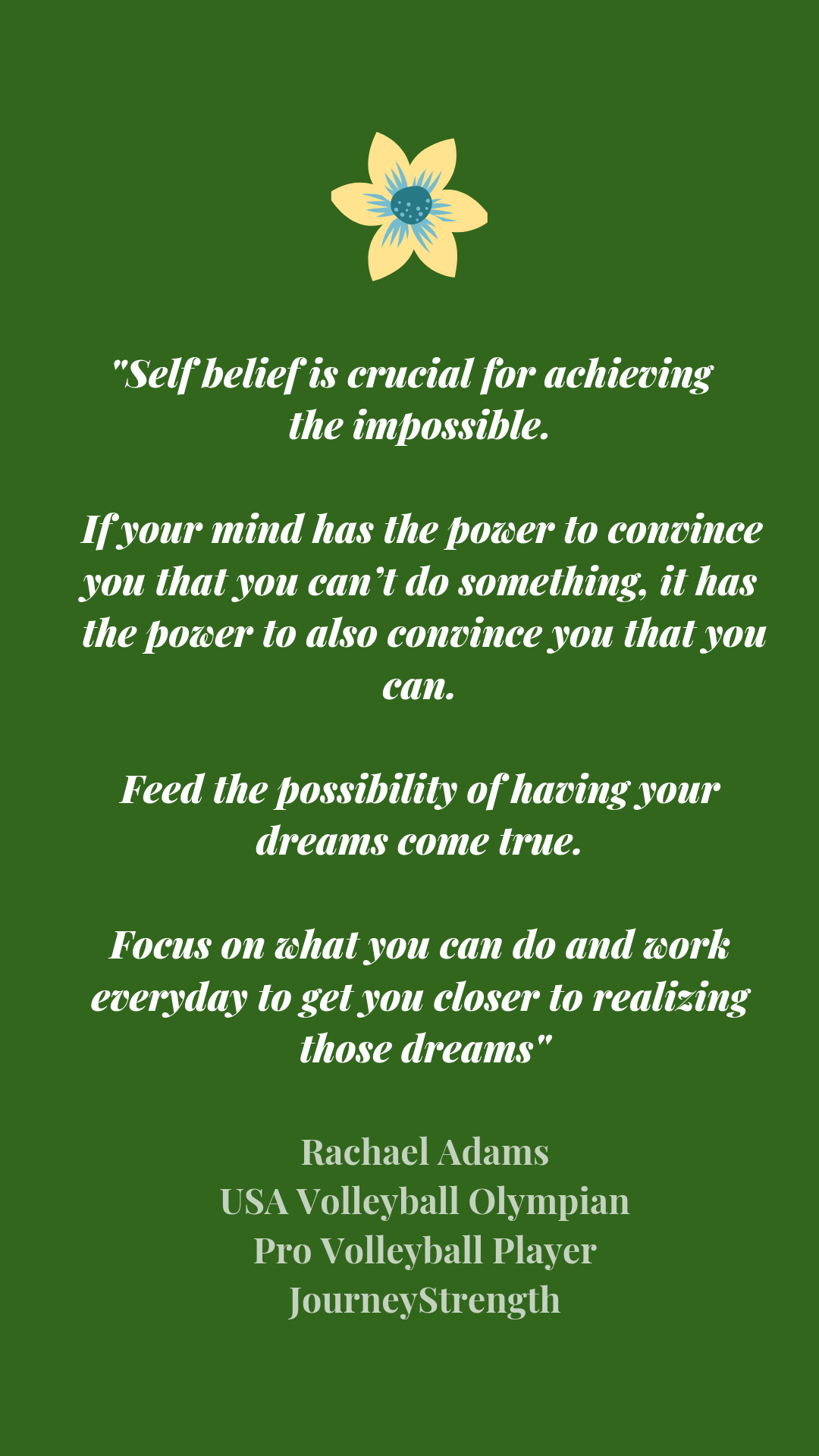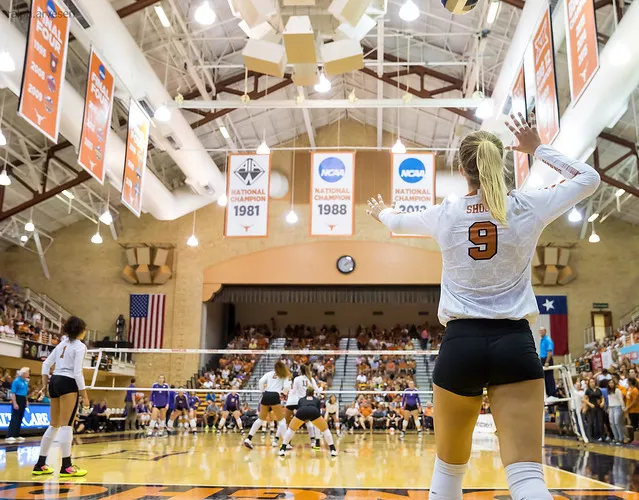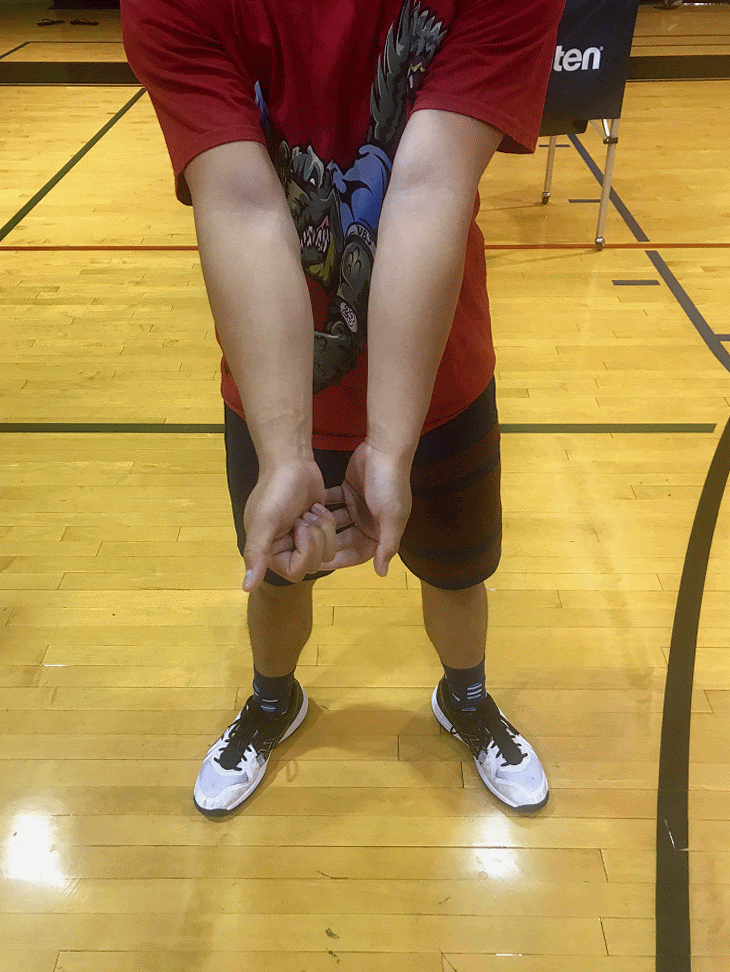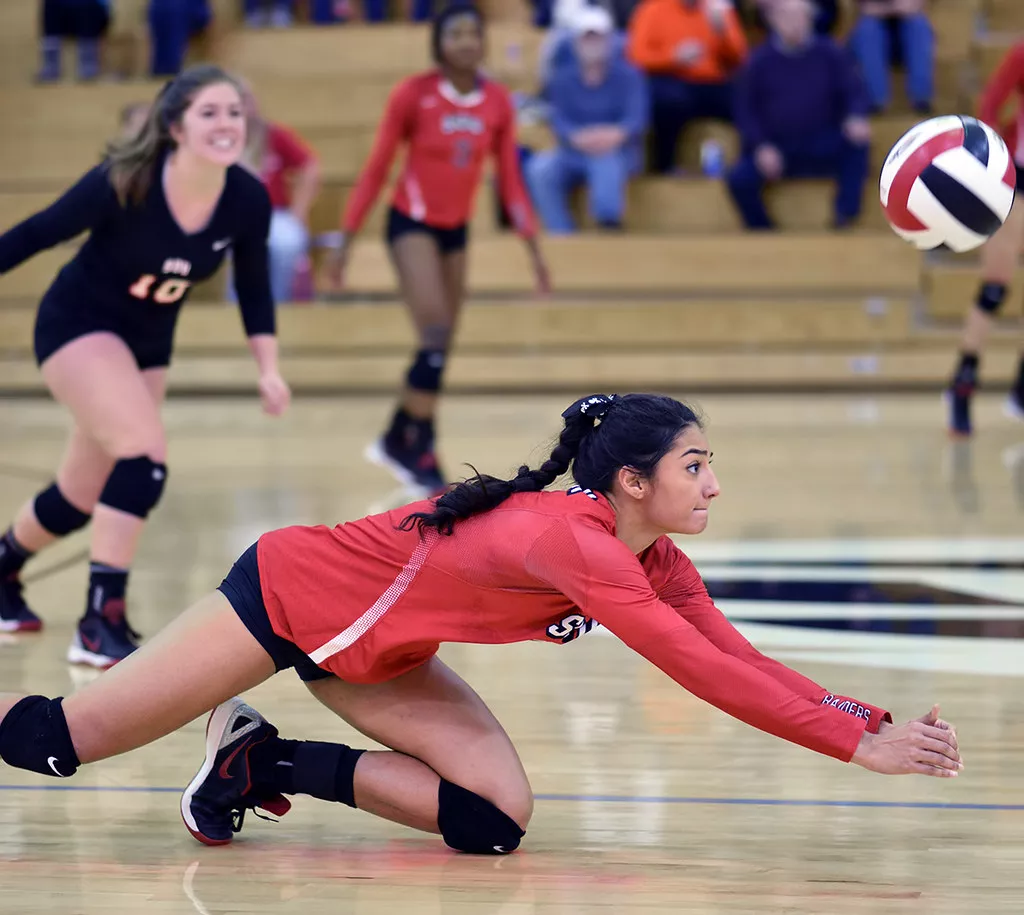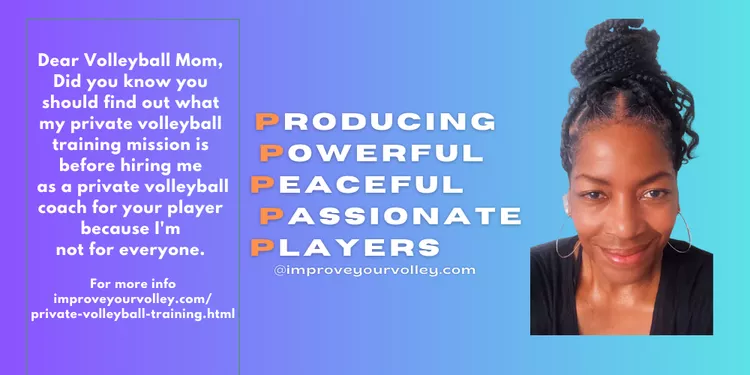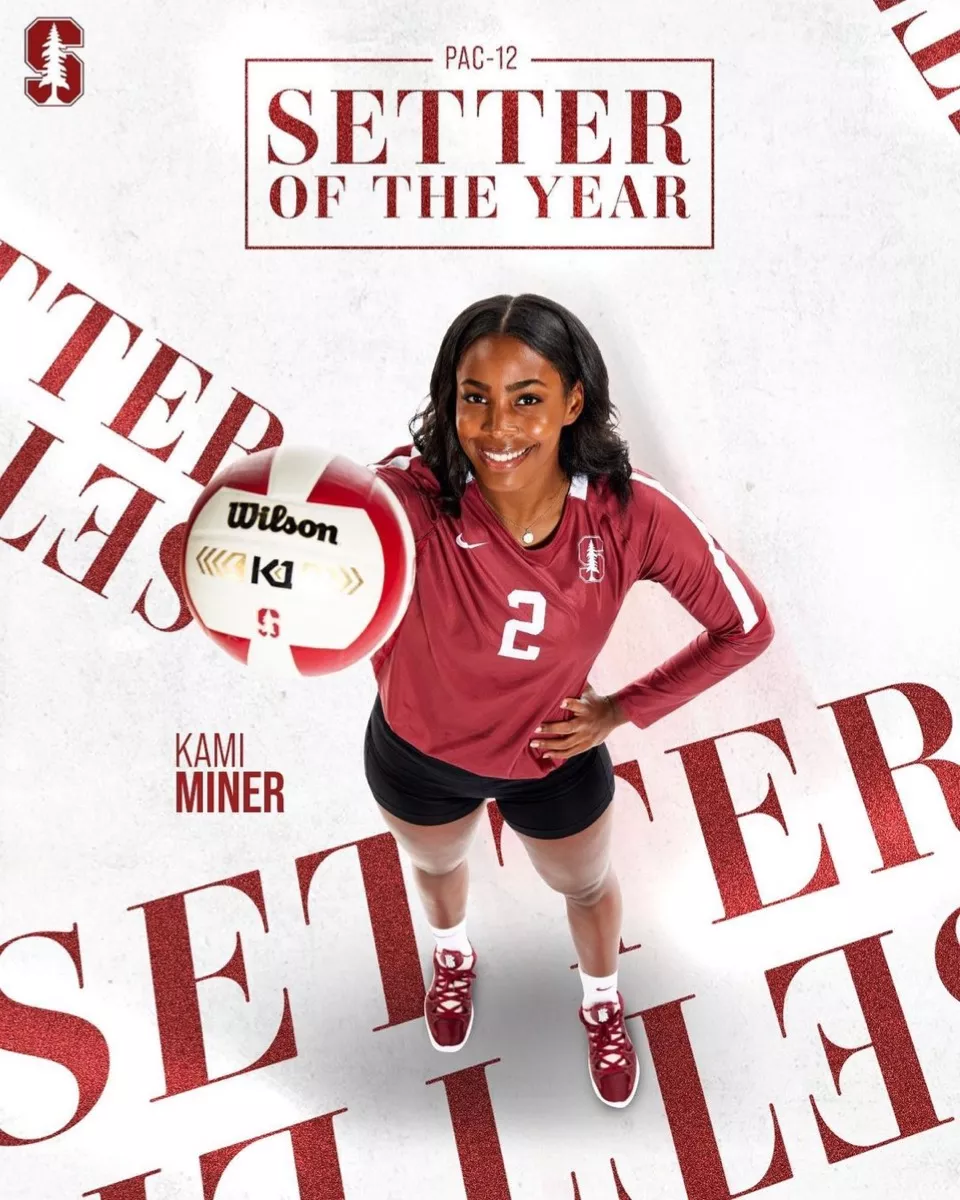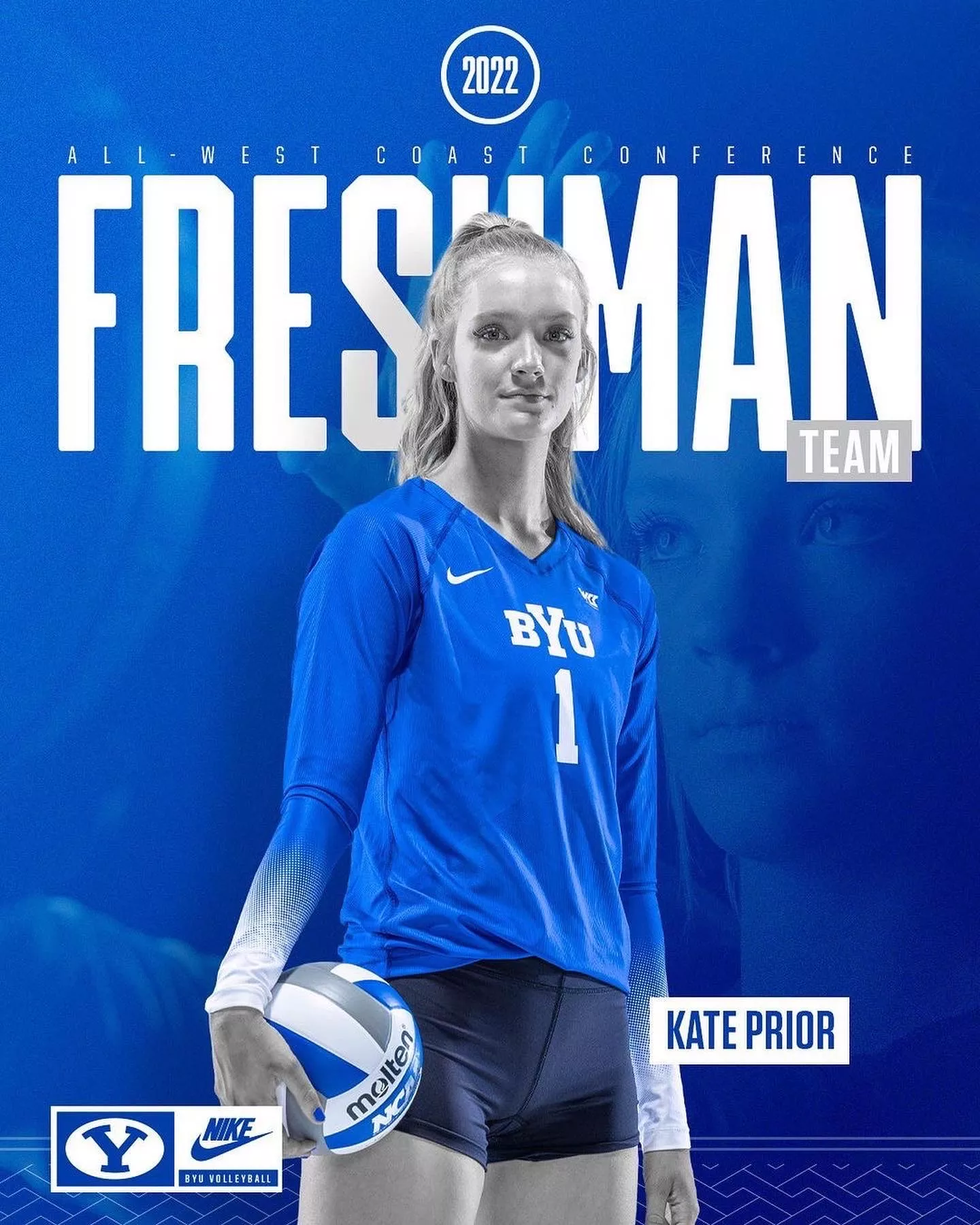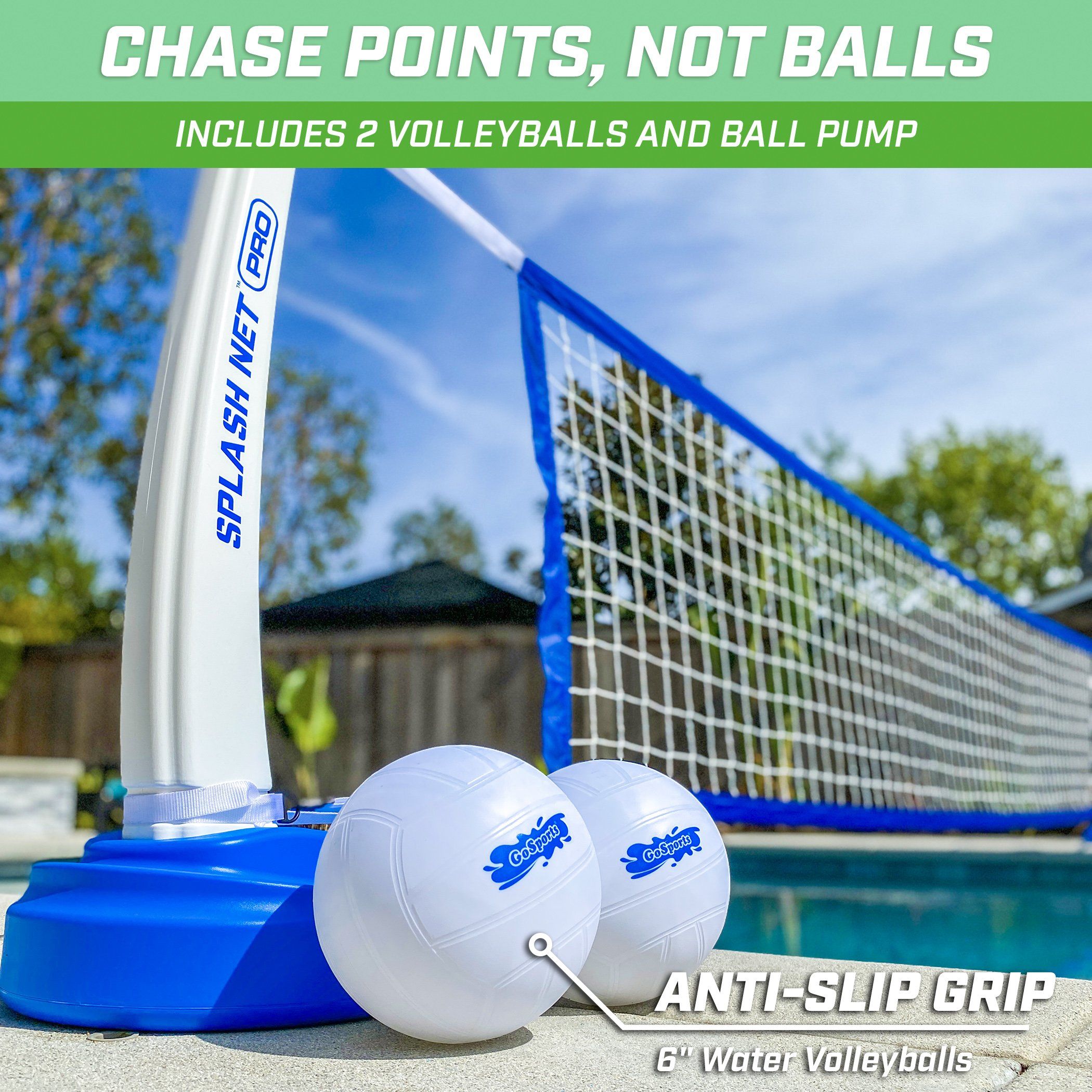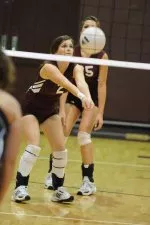- Improve Your Volleyball with Coach April
- The 6 Basic Skills of Volleyball All Varsity Players Should Know
- Improve Volleyball Skills Using Drills Focusing on the 6 Basic Skills
 Dear Volleyball Mom,
Do You Know What Sets My Private Volleyball Training Apart From Anyone In Vegas?
I invite You to read what my private volleyball training mission says before considering hiring me as a private volleyball coach because I'm not available for everyone.
Dear Volleyball Mom,
Do You Know What Sets My Private Volleyball Training Apart From Anyone In Vegas?
I invite You to read what my private volleyball training mission says before considering hiring me as a private volleyball coach because I'm not available for everyone.Improve Volleyball Skills Using Drills Focusing on the 6 Basic Skills
To improve volleyball skills like passing, serving, setting, hitting, digging and blocking here are several drill ideas for each one to learn to play better
Do you need to improve volleyball skills for serving?
As a tough volleyball server, your job is to be comfortable serving anywhere and anyone from behind the service line with pace and precision in order to score points.
When you do your volleyball drills for serving practice you want to do tons of reps to every single one of the six positions on the court.
You want to be able to hit those targets from anywhere behind the service line.
Targets to aim for during your volleyball drills for serving:
-serve seams
-serves the sidelines
serve outside hitters deep in the court
Some players think that being a tough volleyball server means you need to really be sneaky and try and fake out the serve receive by not showing where you are going to serve.
On the contrary I say...let everybody know where you are going to serve.
Face Your Target.
Are you ready to improve volleyball skills in 2025?
That's me training long term private training client Ariella working on consistently serving very aggressive jump float serves deep in the court.
Are you ready to learn how to improve volleyball skills needed to play on your varsity team?
In short they are
These are the six most basic skills of volleyball a competitive middle or high school Vegas player needs to learn in order to make their high school team.
Let's start with serving...
How To Improve Volleyball Skills
What You Need To Know About Serving?
Serving... is the first opportunity a player has.. to score a point... without the help of any teammates... which is why you should get really good at doing this skill.
Wonder why we sweat in our classes? Because we work hard!💪🏾💪🏾
Players improve their volleyball serving skills in my semi-private training and boot camp classes using drills like this rhythm serving drill.
One of my drills and exercises to work on improving your serve that I do is Synchronized Serving in semiprivate training, Breakfast Club for College training.
What's The Let Serve in Volleyball And More Serving Questions Answered
Learn important volleyball service rules and answers to basic let serve questions about what's legal when serving a ball from behind the service line.
What's a "let" serve in volleyball?
The old rules were that when a server served a ball which nicked or touched the top of the net...
Players are given a specific amount of time to serve a pre-determined number of balls to the target area formed by the chairs. hitting the middle of the chairs is rewarded more than just hitting the chairs in this case but coaches can come up with their own rules in order to make this a tougher or easier drill.
How To Improve Volleyball Skills
What is Passing in Volleyball?
In high school and college volleyball the ability to serve receive the serve also known as "passing a ball" from an opponent's serve to your setter is one of the most important volleyball skills to learn in order to play competitive indoor or sand volleyball games and tournaments.
Why? Basically because if you can't pass then you can't play.
Passing is done when you hold both wrists together and with both thumbs side by side and pointing to the ground as you contact the ball on the forearms of both arms.
Tip 1. Keeping your thumbs pointed to the ground, keeps your arms straight.
Your forearms, commonly known as "your passing platform", should be angled towards the target you plan on passing the ball to.
These three volleyball passing tips will help improve volleyball skills for passing and will make a differene on how well you'll get the ball to the target
Tip 2. Keep your arms together without breaking them apart during the pass
Tip 3. Keep your feet on the ground when bumping the ball.
As a passer you want to avoid "jump bumping" instead if you move your midsection out of the way you can still pass the ball with your passing platform angled outside of your body line.
Watch how Aubrey moves her midsection out of the way deciding early which side of her body she is going to open u and get out of the ball's path while putting her passing platform outside of her body line in the path of the ball while keeping her inside shoulder angled towards her target.
That's why it's important to get stopped then use the correct technique.
Don't be lazy just because it seems like an easy pass to make.
Tip 4. Move your feet quickly to get to the ball
Fight to maintain good volleyball passing skill and technique. I'm guilty of committing this error when I know its an easy pass or free ball.
Especially with free balls you need to read where the ball is going to land and the quickly move your feet to that spot BEFORE the ball gets there.
Remember to stay low and keep your shoulders over your knees as you do this...even though its an "easy free ball" doesn't mean you get to forget about using good passing technique and stand up or bend your elbows during this pass.
Tip 5. Keep your arms together when passing the ball.
You have to fight the temptation of breaking your arms apart and keep them together especially when you are passing on the move.
No matter how hard or easy the serve...keep your arms together when you pass a volleyball.
How To Improve Volleyball Skills
What is Setting?
The most common volleyball offense strategies set to the left side:
The "Hut" - a medium high/medium speed rainbow shaped set that fails inside the left antenna after peaking 5-6 feet above the net
To Improve Volleyball Skills For Setting Check These Drills Out
- Right hand jump set a two to yourself
- Left hand jump set a two set to yourself
- Jump set a four set to your partner
Repeat and have fun
You can do this at home against a wall.
Can you do this?
Try a one handed set ... set yourself a two ball.. then hit to your partner.
In Breakfast Club Working on keeping elbow high and swinging fast .. while still controlling the ball to your target.
Too easy? Then.. add the last two steps of your approach jump before hitting to your partner 💪🏾😂💪🏾😂💪🏾
Dm me and show me what you got😎💪🏾.
How To Improve Volleyball Skills
What is Spiking in Volleyball?
Volleyball Drills For Hitting: Tommi Stockham Works On Transitioning from Outside To Hit A Two Ball
BYU commit Kate Prior, with Breakfast Club regulars Talina Inguanzo, Adlai Rodriguez during volleyball hitting drills
These volleyball hitting spike approach tips explain the three step and four step spike approach techniques which create the power for your hitting attacks.
The volleyball spike approach is a set number of steps, usually a three-step approach or a four-step approach that a player makes to gather the speed and gain forward momentum needed to get in the air to make contact with the ball at its highest point.
When an airplane is ready for take off, it makes its approach down the runway to gather speed and velocity so that it can lift itself up in the air.
Tips To Improve Volleyball Skills For Hitting For Players That're Shorter Than Average To Score Points
Hitting off the block is the focus of one of these hitting drills for volleyball players who're short but want to score points against taller blockers in the front row.
shorter hitters can use against taller blockers to sideout and score points.
I'll set up a left side hitter on one side of the net who's competing against a right side blocker on the other side of the net.
Both players start at the net with the Coach in the setter's position ready to toss balls to the hitter who will start the drill.
Lets say the left side hitter starts first.
When Coach slaps the ball left side hitter transitions off the net and has been instructed to only hit the ball down the line.
How To Improve Volleyball Skills
What Is Blocking?
Basic Volleyball Skills
What Is Digging?
While its the blockers job to try and stop the ball at the net, its the responsibility of the players in the back row also known as diggers to keep the ball off the floor, if the ball happens to get past their block.
To dig a ball while your team is in defense a back row player will clasp both wrists together placing one closed fist into the palm of the other hand and point both thumbs down to keep both elbows straight while creating a platform.
This platform becomes the flat surface used to redirect a hard hit spike or attack back up in the air angled toward the direction you need the ball to go while keeping it off the floor.
How To Improve Volleyball Skills:
Where Do You Go From Here?
What do you need to do now? You have three options:
- Learn more about Serving
- Follow the suggested reading on our Sitemap page Learning How To Play (Sitemap)
- Or visit the pages in the How to Play Volleyball section in the drop down menu at the top of the page to get started.
SUSCRIBE
To My Email Newsletter Below!
From Lady Vol to Legend: Coach April Produces Powerful Passionate Players...is that you?
What Are You Looking For?

Hi there!
Thanks for stopping by. Hope you learned something today that will help you reach your volleyball goals.
Be sure to subscribe to my email newsletter so you can learn more each week!
Stay strong! Stay motivated!
-Coach April

SUSCRIBE
to my email newsletter below!
Vegas Volleyball's Unsung Heroes: Celebrating Moms with Peace Love Volleyball Shirts
Ready to energize your volleyball mom journey?
Subscribe to my 'Producing Powerful Passionate Peaceful Players' email list above on ImproveYourVolley.com.
You'll receive energy-boosting tips, exclusive insights from me, Coach April Chapple on maintaining momentum in volleyball.
Let's power up the Vegas volleyball scene together!
Recent Articles
-
5 Volleyball Passing Tips: Essential Techniques to Fix Common Mistakes
Apr 21, 25 05:34 PM
These are 5 volleyball passing tips beginner players need to see that show how to improve your serve receive skills -
5 Beginner Passing Drills Volleyball Players Should Know
Apr 21, 25 04:36 PM
These are 5 beginner passing drills volleyball players need to see that show how to improve your serve receive skills -
Basic Volleyball Passing Drills For High Floater Serves That Rise Up
Apr 21, 25 12:57 PM
With these basic volleyball passing drills remember to anticipate where the ball will land, keep elbows straight, stay in athletic stance, angle your platform
